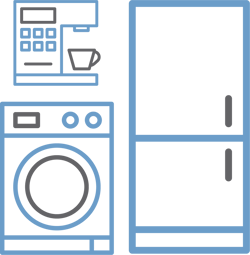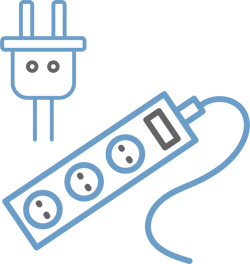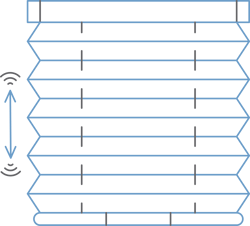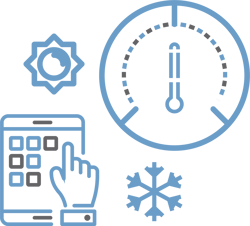The idea of a smart home is attractive for a number of reasons, including convenience, safety and a sleek home aesthetic. From an industry standpoint, one of the most compelling advantages is that it increases energy efficiency by reducing unnecessary usage. In fact, according a 2018 ACEEE report, Energy Impacts of Smart Home Technologies, “U.S. homes can lower their energy use by up to one-sixth simply by incorporating smart technologies.” And with each new iteration, the technology becomes more viable, affordable and user-friendly.
Here are seven of the most promising areas of smart home living – and the potential cost savings from adopting each one.
 |
Appliances and electronics Smart appliances are typical household appliances embedded with the ability to receive, interpret and act on signals sent remotely. They are vocal, flexible and self-aware, able to send alerts, adjust their schedule and self-diagnose mechanical issues. Some smart features, such as sensors embedded in dryers to indicate when a load is dry, have been available for more than a decade. But new technologies and expanded connectivity give residents new ways to interact with and control laundry machines, dishwashers, fridges, televisions and speakers. |
 |
Lighting Smart lighting not only offers flexibility with lighting levels through dimmers, but also complements home security systems to boost safety. Smart lighting can be controlled through remote or onsite signals via three options: a personal handheld device, a smart speaker or a smart hub (a device that can centralize control inside the home). Smart lamps, comprised of LED bulbs and integrated fixtures such as recessed or can lights, integrate advanced LED features like dimming and color tuning. The lamps connect wirelessly to each other and can often be turned on and off via an app on a smart phone. |
 |
Outlets and power strips Smart plugs and outlets can automate the control of any device with an AC plug. Able to be controlled remotely through apps, smart outlets replace existing wall outlets. Smart plugs, outlets and advanced power strips (APSs) save energy by cutting power to plugged-in devices when they are not in use. They can turn off devices automatically, limiting both standby and active power consumption. APSs are designed primarily for the home office and entertainment center, where there tends to be a high concentration of consumer electronics. Energy impact: Some devices, such as rarely used kitchen appliances and video gaming consoles, use electricity even when the appliance is sleeping, According to research by the National Renewable Energy Laboratory, these devices can account for as much as 10 percent of the average household’s energy bills every year. Efficiency Vermont says consumers can save as much as $100 per year by avoiding standby load for game consoles alone. |
 |
Window coverings Smart window coverings consist of wireless motorized shades and blinds that rise, lower or tilt automatically. They respond to changes in daylight by adjusting their height or angle and can also be controlled by preset schedules. Smart shades and blinds replace conventional window treatments, although some existing window blinds and shades brands can be retrofitted with wireless motors. |
 |
HVAC A smart HVAC system makes temperature zoning a new reality. Sensors collect temperature and humidity readings in each room and connect wirelessly to the home’s thermostat. A smart HVAC system uses sensor and local weather data to optimize when and how rooms are heated or cooled. As the technology progresses, smart HVAC may also incorporate smart vents—air supply registers embedded with occupancy sensors—that automatically close when rooms are vacant. Already, some smart vents on the market pair with Nest and ecobee smart thermostats and can respond to commands from the thermostat. |
 |
Water heating Smart water heater controls prevent the unnecessary heating of water. By integrating analytics to learn household water use patterns, they heat water only at times of anticipated need. During periods of inactivity, the water heater idles and the temperature drifts within an acceptable range.
|
 |
Thermostats Smart thermostats incorporate inputs from the local weather station and from wireless sensors that monitor temperature, humidity and occupancy. A smart thermostat automates a home’s HVAC to respond to occupancy, behavior patterns and changes in weather. It can even communicate with other connected devices, particularly ones that utilize geofencing, throughout the home. |
Summary
There are many different ways to begin a smart home journey – and start taking advantage of the energy and cost savings that can come with it. Smart appliances, advanced power strips, and smart thermostats are relatively easy places for a homeowner to start, while switching to a smart HVAC system might be farther down their to-do list.
 Regardless of where your customers are beginning their smart home transformation, they will undoubtedly have questions along the way. To help you get started, we’ve compiled an all-you-need-to-know guide to the connected home of the future: The Age of the Smart Home.
Regardless of where your customers are beginning their smart home transformation, they will undoubtedly have questions along the way. To help you get started, we’ve compiled an all-you-need-to-know guide to the connected home of the future: The Age of the Smart Home.






